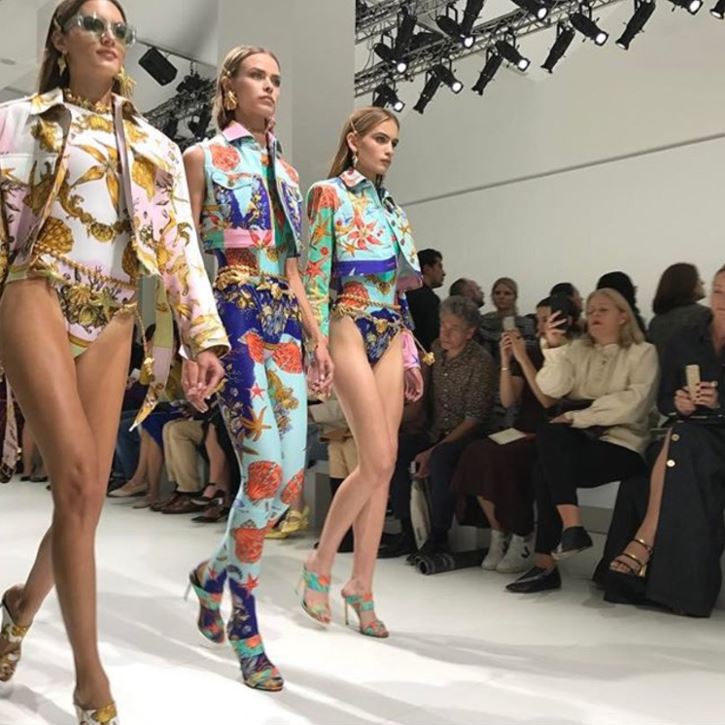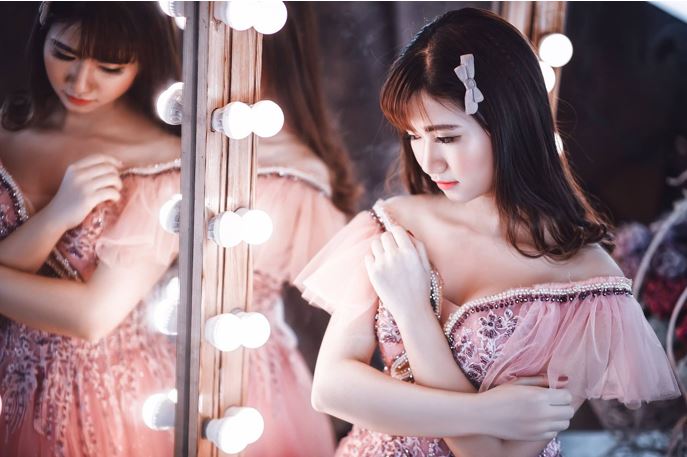Established brands, new enterprises looking to carve out a unique niche, or up-and-coming designers searching for a USP to make their mark in the custom apparel industry – any fashion company should keep a keen watch on the emerging trends for 2019. How consumers view clothing, price points, and changing tastes can influence the success or failure of couture houses. Experts keeping watch on the industry have identified 6 key factors that high-profile designers and makers of custom apparel should keep in mind when working out their production and marketing strategies.
 1. Buying Trends are No Longer Dependent on Seasonal Collections
1. Buying Trends are No Longer Dependent on Seasonal Collections
In the past years, designers would focus on putting together collections for a particular season by predicting what consumers would like to wear. Accordingly, they would organize fashion shows in which super models would display their latest designs. Later, the clothing would be offered at retail stores where people could buy them. In the coming years, like this article on CBInsights reveals, couturiers have noted a major shift towards new fashion trends where each week new silhouettes and colors make their debut in the stores.
The focus is moving toward the releases by smaller designers who create and market only a limited number of pieces in each style. Smaller labels in the custom apparel industry prefer to advertise their wares via platforms like social media and influencer marketing. Customers are no longer interested in waiting for fashion shows to tell them what to wear. Buyers wanting to go shopping would rather check Facebook, Twitter, Instagram, and other social media for styles that their favorite celebrities are wearing and adopt them into their wardrobes.
2. Customized 3-Dimensional Printing
Custom fashion apparel manufacturers are acknowledging the demand for quick printing on garments such as t-shirts, hoodies, custom hats, Polo shirts, and sportswear. A good example is RushOrderTees, a customized printing company that takes orders for specialized designs and prints them for customers. The company has made its mark thanks to the high-quality garments it provides and the different printing options offered including 3D printing, Twill printing, Direct-to-Garment printing, and various others.
The agency has also gained popularity for the fast turn-around-time they provide and the precision and finish in the products they deliver. 3D printing methods reduce the wastage of fabrics by 35% through the production processes. This factor brings down the price points of the clothing making them more affordable and attractive.
 3. The Going Green Factor
3. The Going Green Factor
Statistics reveal that by 2020, potential buyers of fashionwear are likely to rise to 1.2 billion with the age demographic ranging from 16 to 24 and 25 to 34 years. Given the dedication of the younger generation to conservation and reducing waste, these customers tend to support companies that advertise the green initiatives they’ve adopted. Industry experts are noting how brands that have indicated their adoption of eco-friendly polices clearly have an edge over the competition.
Grace Farraj is the SVP, Public Development & Sustainability at Nielsen. She says, “Brands that establish a reputation for environmental stewardship among today’s youngest consumers have an opportunity to not only grow market share but build loyalty among the power-spending Millennials of tomorrow, too.”
4. Preference for Sustainable Fabrics
Yet another trend in the custom apparel industry is the emergence of organic fabrics that won’t harm the environment. The study by Neilsen reveals that not only do buyers prefer products that are made with sustainable materials, but they would be open to spending more on organic and naturally-made products. Given a choice between personal gratification and convenience, Baby Boomers and Millennials prioritize personal values and ethics.
Research shows that 12% more buyers now opt for eco-friendly products. In an attempt to capture the market, the big fashion houses are coming out with options. For instance, H&M has released the Conscious Collection, which has leather jackets and cowboy boots made with pineapple leaves and Adidas now offers sneakers made with plastic recovered from the oceans and recycled. Fabrics made with microalgae and macroalgae could also be up for grabs in coming times.
 5. Ownership vs. Pre-Owned or Rental Apparel
5. Ownership vs. Pre-Owned or Rental Apparel
Check out this feature on McKinsey that outlines how the custom apparel industry may have to adopt new business models that allow consumers to rent or subscribe to expensive couture and garments that they can own and use only for a short time.
With rapidly changing fashion and styles, buyers would prefer to rent expensive couture and accessories instead of investing in them. Large design houses must devise new partnership strategies with retailers catering to shoppers who don’t mind stocking their wardrobes with pre-owned attire.
6. Direct-to-Customer Branding
In the past, customers could walk into malls and shopping arcades, check through the racks of attire and choose what they liked. But, the custom apparel industry now has a host of smaller brands that cannot afford to stock the shelves with large consignments.
These companies are choosing to connect directly with shoppers through online portals. Not only can buyers check for innovative designs with unusual cuts, but they can also order the products they like online. State-of-the-art software and apps allow shoppers to add in their measurements.
The apps take orders for customized fits after giving customers a preview of how the design will look on them. In a fast-paced age when people are short of time and bandwidth to go shopping, they’re highly appreciative of brands and stores that allows them to place orders with the click of a button. This is primarily the prime reason why online stores like Amazon are so popular, it’s because they can deliver at their doorstep.
Players of the custom apparel industry must change their production and marketing processes to match the shifts in the consumer preferences and demands. With shoppers now looking for affordable attire that is sustainably produced and also convenient, companies may want to look at innovative approaches to continue to hold buyer interest. Technology has given voice to smaller players. As a result, competition is revving up. The coming years may see a radical change on how business is conducted in the couture arena.

